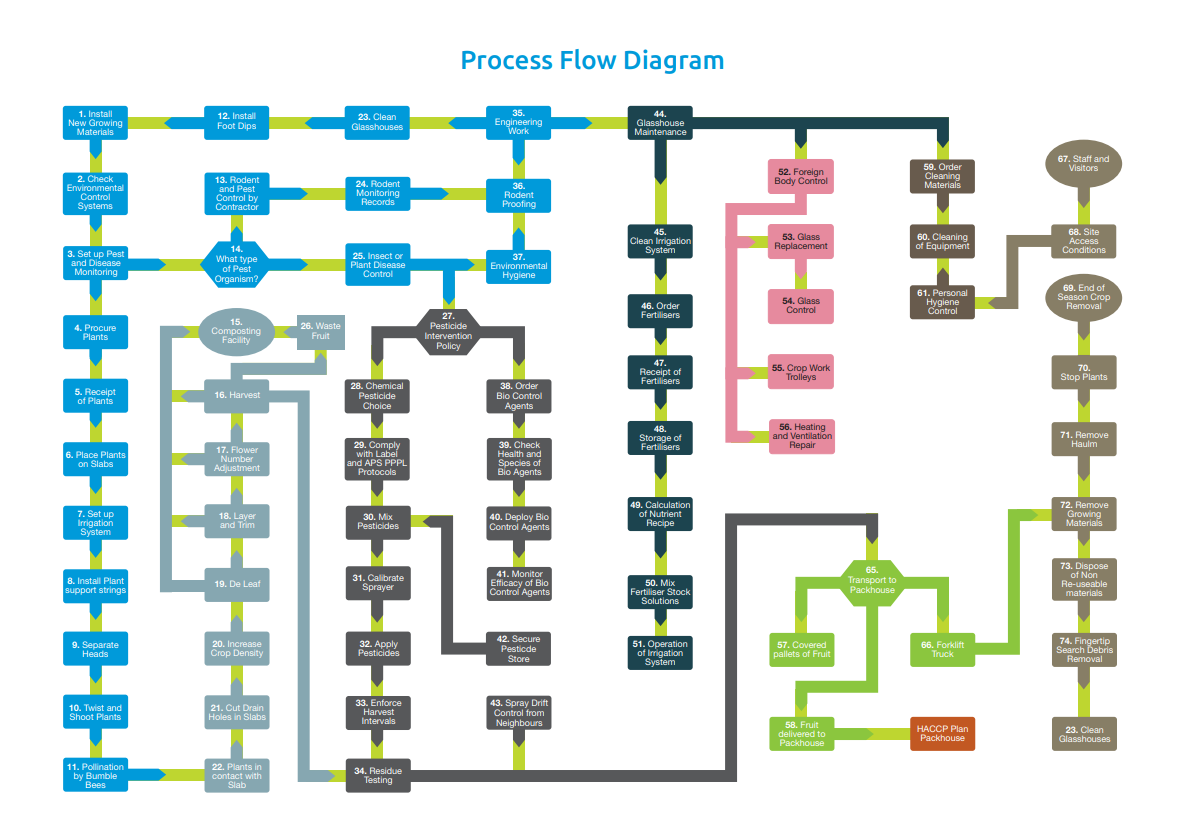Please click here to access the main AHDB website and other sectors.
- Home
- Knowledge library
- Biosecurity guide for protected edibles
Biosecurity guide for protected edibles

Biosecurity guide for protected edibles
Biosecurity in a horticultural sense can be defined as ‘a set of measures that can be put in place at the national, regional or production nursery level to protect against the introduction and spread of new pests, and to effectively deal with them should they arrive’.
These pages consider biosecurity in a wider sense to be the measures that can be put in place to manage existing as well as potential new ‘pests’ (including disease, virus and viroid).
Crops are living entities and susceptible to attack by biological organisms throughout their life. Growers must achieve optimum yield from the crop while minimising the risk of attack by pests and pathogens during cropping. At the end of the season, pests and diseases must be prevented from carrying over to the start of the next crop. Looking at the production system logically and thoroughly from seed sowing/transplanting to end-of-cropping clean-up and crop disposal will help identify all the areas which can be proactively managed in order to eliminate, or at least reduce, problems.
Download the Greenhouse Biosecurity Workflow

The building of new glass is the ideal stage to plan for biological threats. Consideration should include: surrounding cropping, glasshouse orientation, height and type of glass, air flow, water-application method and crop orientation and density. This includes addressing clean storage of all input items, such as plants, water, fertiliser and biocontrols, as well as disposal of crop waste. Prior to cropping, operational protocols should be written which consider and minimise the risk of biological threats. A useful source of information on the whole crop production cycle can be found in the Red Tractor Fresh Produce Crop Protocols.
AHDB Horticulture has been funding research on weeds, pests, diseases, viruses and viroids since its establishment in 1986. There is a wide body of research available via AHDB, which lists individual project reports, and also on the wider internet from extension services in other countries. The following sections draw out key results from projects which have included how to minimise the risk of pest, disease, virus and viroid spread and to manage the problem, thus preventing carry-over through the clean-up at the end of the season and ongoing biosecurity measures. The text also draws on published information from other web sources.
It is critical to check that any of the products mentioned are currently approved by the HSE as results are summarised from historic work. (This guide was published in September 2017.)
Sectors:

